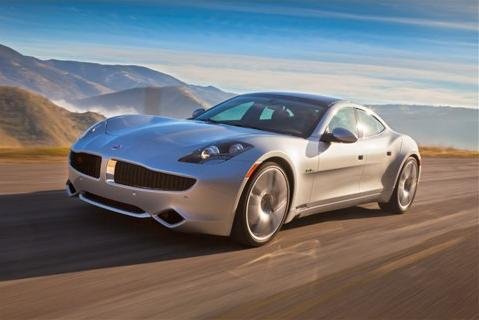 A123 announces battery manufacturing glitch
A123 announces battery manufacturing glitch
A123 Systems, the battery manufacturing company that supplies Karma, General Motors and Smith Electric Vehicles, has released an announcement regarding a hose clamp misalignment that could affect the battery cooling system of the battery it supplies to Fisker for the Karma electric vehicle (EV). This misalignment could potentially cause a coolant fluid leak, which could lead to a short circuit in the battery pack. Fewer than 50 customer cars were impacted by the result of this finding, and steps have already been taken to correct the issue on future production.
EVs are having a hard enough time gaining sales traction as it is, with reports of early adopters running out of juice and limited driving range impacting consumer’s thoughts on the viability of the EV to replace their conventional internal combustion engine (ICE) vehicle. Stories like this only raise the wariness factor among those that were already less than enthused about the whole EV idea. Too, it shows the importance of having a long-term research and development effort having gone into the development of the battery system that is to be at the very heart of the electric car. Nissan has been working on this challenge for almost 20 years. The Nissan Prairie EV was the world’s first electric car with a lithium-ion battery in 1995. The original Nissan EV lithium-ion battery system was a collaboration between Nissan and Sony that reaches back to 1992. Many of today’s battery systems use variations of laptop batteries. If you’ve ever worked with a laptop on your lap you know how warm that these batteries can get. Currently Nissan uses no active battery cooling system, as the construction of the battery pack is designed in such a way as to make an external cooling system unnecessary. This provides for a simpler, safer and lighter battery construction. Once Nissan gets full battery production capacity at all of their planned worldwide battery plants, we could see Nissan become a battery provider to other manufacturers should we continue to see these mishaps by other battery makers.

“EVs are having a hard enough time gaining sales traction as it is”.
Ernie, there’s a big difference between sales volume resulting limited production versus sales volume from limited demand. The EV sales volumes today are a result of limited production.
indy – While I agree that on a national level, sales are, and will continue to be, supply constrained until Smyrna comes online, if you look at three West Coast centers of early LEAF adoption (Bay Area, Los Angeles/Orange County and San Diego), you will find inventory building. Autotrader.com is a good source to view availability. That said, I think that many potential early adopters reserved and ordered prior to having figured out the car and their needs, and declined to take delivery upon arrival. We shall see if the take rate improves in follow-on launch states or if that trend continues.
Thanks Ernie for the update. I am a bit worried that the demand may not be as high as expected. I notice that Mossy Nissan is offering 20, 2011 and 2012 LEAF’s at a discount. My hope is that the charging infrastructure improves in a hurry as I fear that people will lose interest in EV’s with limited range before it is in place. My other concern is that Charging sites may charge so much that people will not use them unless absolutely necessary and once again limiting the acceptance of EV travel.
Frank – I believe that the charging infrastructure will take a couple of years or more to work itself out. This is all new to drivers and to infrastructure providers. Initially, my thought is that it will continue to be a no-fee inducement to attract customers. As fees start being charged, EVSE hosts will quickly determine what a viable rate structure will be if they don’t want their investment to be a liability rather than an asset.